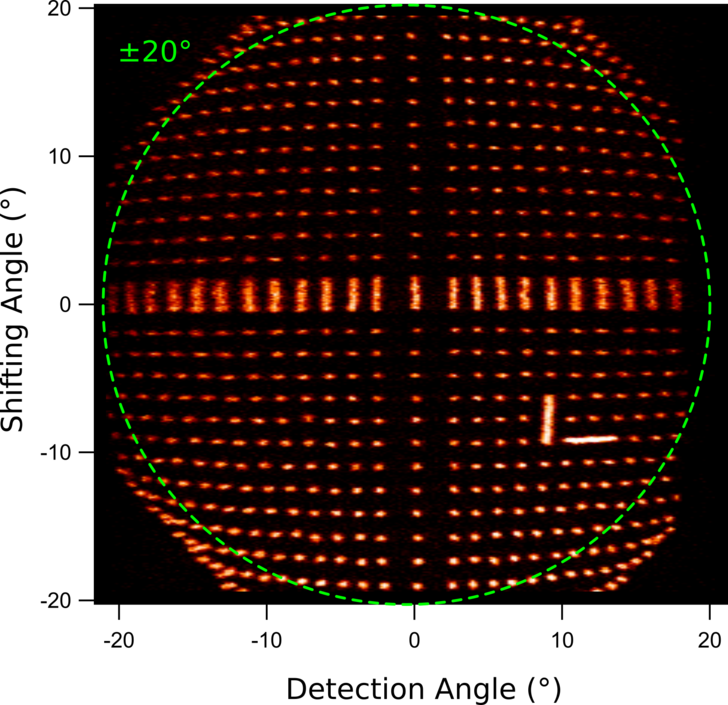The momentum mapping mode has successfully been tested with peerless precision
First tests of the recently finished ASTRAIOS 190 2D-CMOS has proven the high precision and superior technology of the single spot shifting lens for ARPES deflection experiments. First results, performed with a test aperture, using the ±20° wide angle mode are presented here. The emission spot size was 30µm, using a thin wire exposed to an electron source. The result of the test aperture scan is shown in the measurement below: Each dot is an electron beam, recorded at a fixed kinetic energy after passing through the test aperture from the exposed wire below. The electrons enter the analyzer at a defined angle. Each spot corresponds to an angular step of 1.5° starting at 4° off the central line with a width of 0.23°. The green circle corresponds to the emission angle of ±20°. The y-axis is the on energy channel axis of the detector, e.g. the angular dimension along the entrance slit. The x-axis is the deflector scan direction, representing the second angular emission direction accessible via the shifting lens scan.
These patterns are a critical step in the characterization of deflector analyzers. These patterns should be as straight as possible through the shifting lens scan. The results presented here are explicitly pure unprocessed raw data to demonstrate the outstanding quality of the single point shifting lens.
We are proud and excited to offer this fantastic technology to the surface science community. More tests are upcoming, including the full ±30° acceptance angle, angular resolution and energy resolution. Stay tuned for updates!

